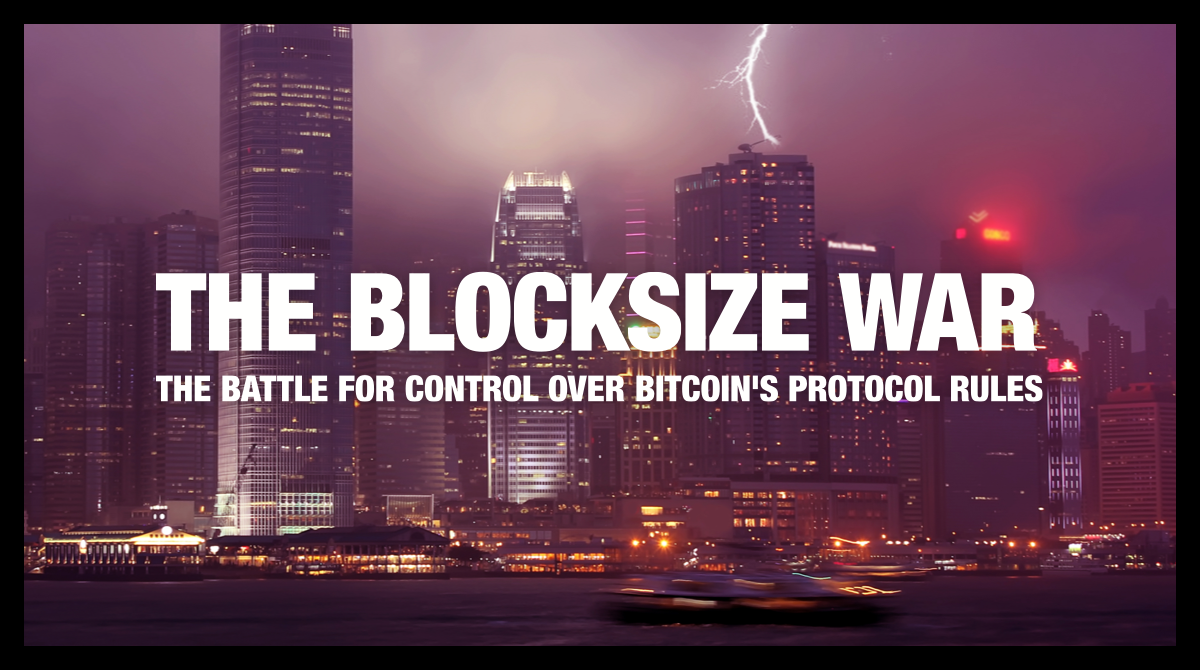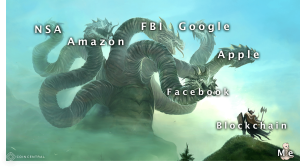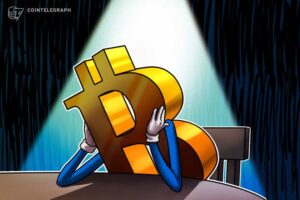Chapter 13 of the book The Blocksize War is published below. The full book is available on Amazon. As a reminder, 50% of any profits from physical book sales will be donated to Médecins Sans Frontières, a charity that provides medical assistance to people affected by conflict, epidemics, disasters, or exclusion from healthcare.*
* Note: Applies to sales up until the earlier of i. the death of the author and ii. January 2031
The Blocksize War – Chapter 13 – Exchanges
In the year or so that the war had been raging, the industrial landscape of the cryptocurrency ecosystem had changed considerably. The most significant change was the emergence and growth of several cryptocurrency exchange businesses, whose success was driven by considerable demand from the retail market in the Asia Pacific region. Companies such as Poloinex, BitMEX and, perhaps most significantly of all, Bitfinex. Bitfinex was probably the most important company in the space at the time, with respect to price formation. While the US-based companies backed by Silicon Valley, such as Coinbase, were staunch large blockers, the opinions of these newer players was largely undecided. This was therefore an opportunity for both sides in the conflict to speak to and lobby these companies. In general, it is fair to say that the smaller blockers did a better job here than the large blockers, although the experience of Ethereum in 2016 was probably more significant than anything else in terms of changing opinions. Without much prior baggage in this war, these exchanges were more pragmatic and appeared to be persuaded by the merits of the smaller block arguments.
On March 17, 2017, yet another important date in this saga, several major exchanges, including Bitfinex, Kraken and Bitstamp, dealt a major blow to Bitcoin Unlimited. They issued a joint announcement, indicating that they would not regard Bitcoin Unlimited as Bitcoin, even if it had a majority of the hashing power. They also said that “any consensus breaking implementation” required replay protection.
Since it appears likely we may see a hardfork initiated by the Bitcoin Unlimited project, we have decided to designate the Bitcoin Unlimited fork as BTU (or XBU). The Bitcoin Core implementation will continue to trade as BTC (or XBT) and all exchanges will process deposits and withdrawals in BTC even if the BTU chain has more hashing power. Some exchanges intend to list BTU and all of us will try to take steps to preserve and enable access to customers’ BTU. However, none of the undersigned can list BTU unless we can run both chains independently without incident. Consequently, we insist that the Bitcoin Unlimited community (or any other consensus breaking implementation) build in strong two-way replay protection.
This stance was eventually followed by some other major trading platforms. Poloniex stated that:
At a minimum, any new fork must include built-in replay protection.
On the same day, BitMEX followed suit, taking a similar position
There is significant doubt that a Bitcoin Unlimited (BU) hard fork could be done safely without additional development work. In the case of a fork, we support the plan as proposed by Bitfinex, Bitstamp, BTCC et al. It will not be possible for any exchange, including BitMEX, to support both chains separately. For these reasons, BU will not be listed or used as a deposit/withdrawal currency until replay protection is implemented and BU is not at risk of a blockchain reorganization if the Core chain becomes longer.
These trading platforms had now made their positions clear. They would regard Bitcoin Unlimited as an alternative coin, not Bitcoin. In addition to this, they had learnt the lessons from Ethereum Classic; Bitcoin Unlimited would not even be supported by their platforms if they didn’t add replay protection. Reading these statements, it looked like the smaller blockers had helped to instigate or draft these comments. Large blockers had tried this industry letter trick back in 2015 with Bitcoin XT, and now small blockers were playing this game too.
As for replay protection, the exchanges were asking for the transaction format to change on the new coin. This would ensure that the same transactions were not replayed on both chains after the split. This would help exchanges comply with their obligations as custodians and safeguard the assets of their clients.
It is worth pointing out here that the cryptocurrency trading ecosystem had evolved considerably since 2015. It now consisted of a lot more than just spot exchanges. Bitfinex, for example, was not just a simple exchange; the company offered a range of services, from leveraged Bitcoin trading, cryptocurrency futures and derivative contracts, to Bitcoin lending and debt markets. When considering the financial implications of a chain-split or a hardfork, this made things considerably more complicated. For example, what if you had borrowed a coin before a split – would you need to pay back the debt in both coins? What if you were margin long Bitcoin at the time of the split – would you now be margin long both coins or one coin, and how would they decide which coin? These dynamics, quite rightly, made some trading platforms even more concerned about a potential split. Their business model was to run 24/7, so they couldn’t just shut down and let things work themselves out. The small blockers appeared to understand some of these dynamics, to some extent, and were able to exploit these characteristics of these business models, to help gain more support for their cause.
On March 18, 2017, one day after the exchange announcement, Bitfinex made another landmark decision, which had a lasting and instrumental impact on the blocksize war. Bitfinex listed futures contracts for Bitcoin Unlimited vs Bitcoin Core. The futures contracts expired at the end of 2017. The Bitfinex platform allowed users to split their Bitcoin into two tokens which existed on the Bitfinex platform, BCC (representing Bitcoin Core) and BTU (representing Bitcoin Unlimited). These two tokens were then freely tradable for Bitcoin on the Bitfinex platform. Investors were finally free to express their view with something at stake. In the past, there were coin vote websites, where people made controversial comments about the blocksize war and Bitcoin holders could sign these messages with the public key linked to a Bitcoin address. These websites could be used assess the opinion of Bitcoin holders, but there was nothing at stake. Now, real money was finally at risk.
This marked a fundamental change in the war: now, it was truly monetised, rather than just an exchange of angry words. Some in the large block community had always felt trapped. They believed that the economic majority was on their side, and they would win if only they were given financial freedom to express their views. “Let the market decide!” they would often proclaim. Now, finally, at least to a limited extent, we had a market. Most people had positive things to say about this and were generally supportive of Bitfinex. The one downside was that, to bet on the outcome in this situation, one had to take custody risk with Bitfinex for around nine months. By this point, Bitfinex’s track record was far from perfect and the company had suffered from major hacks in the past. Bitfinex would go on to list four more chain-split tokens in 2017 for other hardfork proposals.
As for the price of the Bitcoin Unlimited token, it never reached more than 20 percent of the price of the Bitcoin. It started trading in the 15 percent to 20 percent range, before declining to around three percent at the start of May 2017. The price of the coin then reflected the twists and turns of the blocksize war as the battle continued, rallying in late May 2017 and then again at the end of August. There were also a few technically-driven rallies: traders sometimes needed to purchase the Bitcoin Unlimited futures contract token to merge it back with the Bitcoin Core side of the contract, such that they could combine the two tokens into Bitcoin again, which they were then able to withdraw from Bitfinex. Finally, at the end of the year, the Bitcoin Unlimited token expired worthless, as no Bitcoin Unlimited-related chain-split occurred.




















